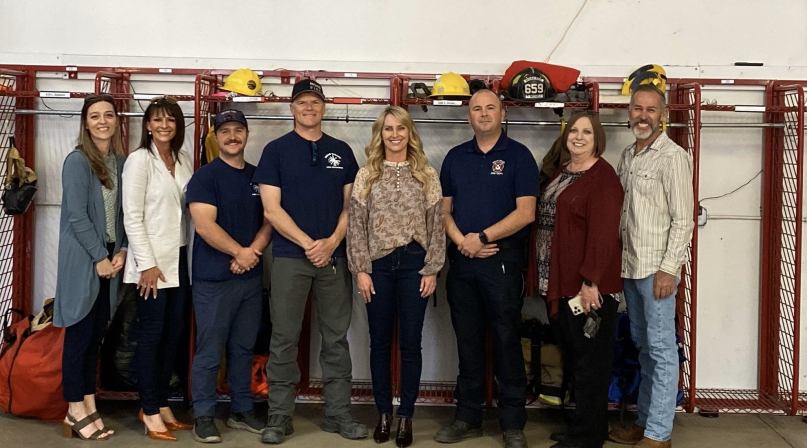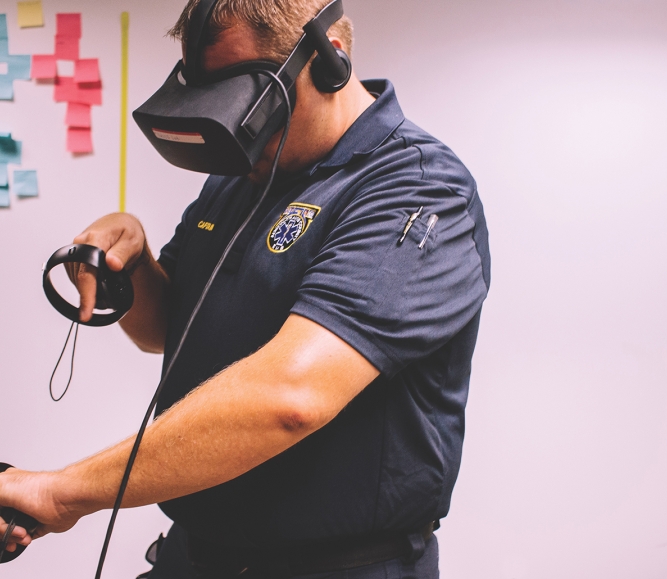Utah Association of Counties takes on health benefits for EMTs

Brandy Grace always knew dinner time with her mom was fleeting.
She was a volunteer emergency medical technician, and that meant living in a state of readiness.
“I grew up knowing that if my mom’s pager went off, she was going to jump in the vehicle and take off,” Grace said.
“Witnessing firsthand what it’s like to have a mother as an EMT, the time commitment it requires and the emotional toll it takes, I’ve always had an appreciation for people who serve in that capacity.”
Her curiosity offered her an insight that would fit into a larger pattern that she recognized as an adult.
“I remember always asking, when she got home, if she was helping someone in Scipio,” the Millard County, Utah town where her family lived, “but nine times out of 10, it would be someone on the freeway.”
Now, as the CEO of the Utah Association of Counties, she sees a lot of her member counties struggling to recruit and retain volunteer EMTs, and she’s taken it on herself to give them some help.
While Utah benefits from numerous national parks, national monuments and other attractions, they are usually located in more rural counties, with populations and tax bases that aren’t suited to support millions of visitors who get injured or lost every year. The residents who live there are also living in different patterns and trying different things than the visitors.
“We do like tourism, we like the benefits to local economies and small businesses in these areas, but we also want to make sure that they have a really positive experience which means that we need to be able to manage the impacts from the additional people visiting,” Grace said.
Working with former Piute County Commissioner Darin Bushman, a former EMT himself, Grace probed counties for what would help draw in volunteers, and health insurance was the answer.
Bushman is now division director for the state Bureau of Emergency Medical Services and was named 2023 Advocate of the Year by the Rural EMS Directors Association.
“When you think about it, a lot of these people are farmers or ranchers or they work for a small construction company and maybe they have a spouse who works somewhere where they’re offered health insurance, but a lot of them just don’t have access to health insurance,” Grace said.
“They’re providing healthcare — they should get it themselves.”
After a few years of lobbying, the Legislature passed a bill allocating $14 million for 23 of the state’s counties and small municipalities to offer a high deductible health insurance plan to certified EMTs who respond to 20% of calls. So far, 120 EMTs are on the program, which the Utah Association of Counties administers.
Ben Armstrong, EMS director at Kane County Hospital, acknowledged that his department uses fewer volunteers than other Utah counties, but one Kane County EMT who had stepped away from volunteer work got more involved again after the program was established and was making use of it to gain coverage for his family.
“It’s worked out well for him,” he said. “We just recently started a basic EMT program and have about twice as many students that we anticipated, and my intent is to make sure that they are aware of this program as we kind of get closer towards the end of this course in the hopes that some of them may opt to work with our volunteer program.”
That kind of staffing is crucial to providing service that will keep visitors traveling to their counties.
“I think that most people assume that when you call 911, that help is coming,” Grace said. “We have tourists from outside our communities, outside the state, outside the country even, who don’t even realize the challenges that we have with getting volunteer EMTs, and so they just assumed that help would be there if they needed it, and the reality is that we’re really struggling to provide that service.
“I think our citizens are aware of what is available to them, but tourists, not so much.”
Related News

County Countdown – June 30, 2025
Every other week, NACo's County Countdown reviews top federal policy advocacy items with an eye towards counties and the intergovernmental partnership. This week features the Senate reconciliation debate, transparency on sanctuary designations and more.

DHS releases list identifying sanctuary jurisdictions; includes nearly 400 counties
NACo, along with the National League of Cities, and the International Municipal Lawyers Association, requested additional clarification on the methodology used to create the list, and noted concerns around the legal challenges that localities face when complying with ICE detainers. As of this time, NACo has yet to hear of a county receiving a formal notification that they were included on the list.

U.S. House of Representatives introduces legislation to expand Medicaid coverage for behavioral health treatment facilities
On June 20, a bipartisan group of lawmakers introduced the Increasing Behavioral Health Treatment Act in the U.S. House of Representative. This bill aims to improve access to behavioral health care nationwide by removing long-standing Medicaid funding restrictions for behavioral health treatment in certain facilities, providing new flexibility for states and counties to meet growing behavioral health needs.
County News
Virtual reality enhances training for county EMTs

